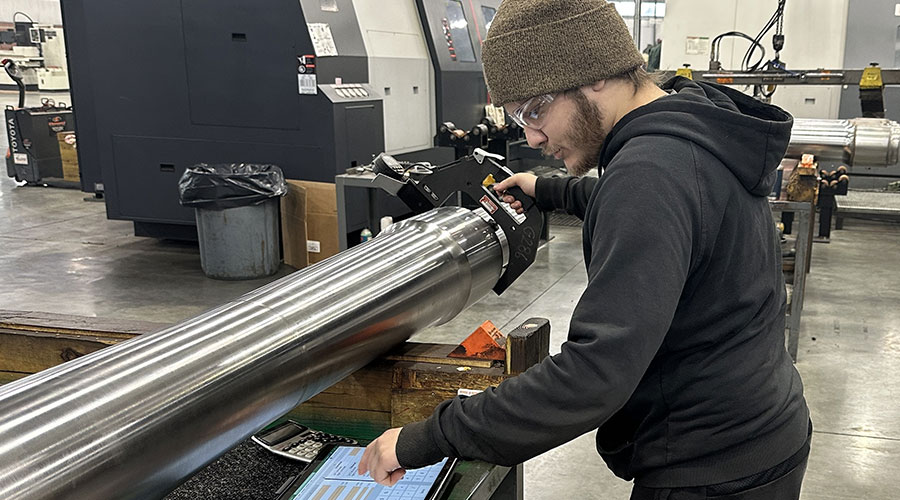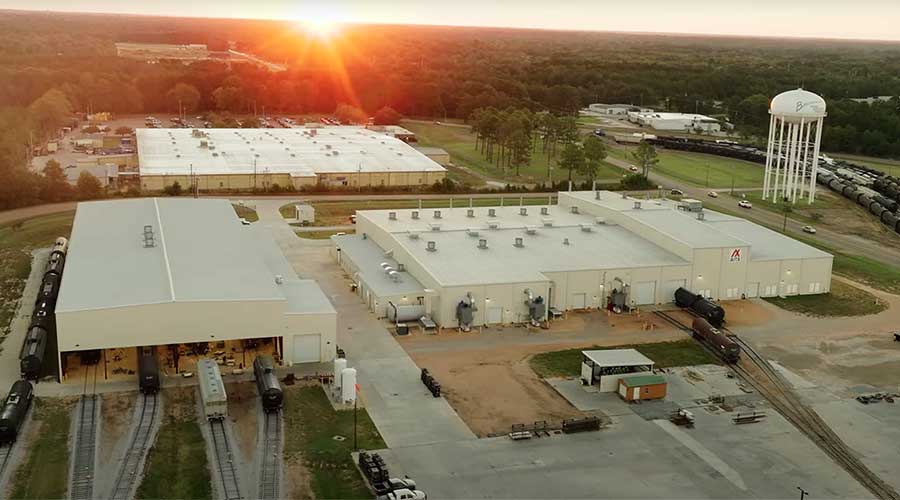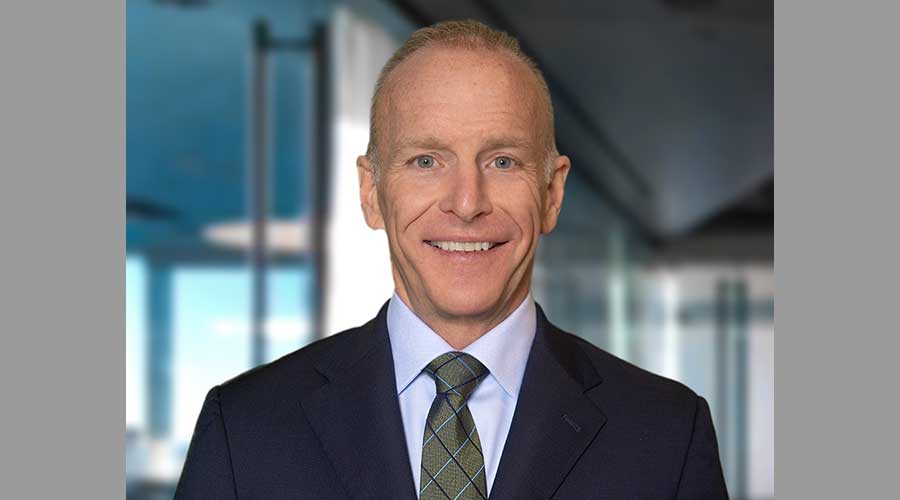Stay updated on news, articles and information for the rail industry
July 2007
Rail News: Mechanical
No break for power brokers
Since 2003, railroads have been operating more trains and switching more rail cars than ever before to keep up with burgeoning traffic demand. And they’ve needed to acquire or rebuild more power to do so.
That’s made it one sweet ride for locomotive builders, lessors and repair firms. If they ever had any concerns about excess power eventually creeping into the market, they could, as often expressed on the recently concluded HBO series The Sopranos, “Fogetaboutit!”
“The past four years, railroads have needed every ounce of power out there,” says Len Baran, locomotive product leader for GE - Transportation.
But the ride might be slowing or, at least, approaching a curve. During 2007’s first half, there were signs suggesting the market could be shifting: a few locomotives began to re-enter lessors’ fleets after leases expired, orders for new power to be delivered in 2008 started to soften and locomotive shops’ business fell off for several months.
Yet, builders and repair firms aren’t bracing for a downturn. The locomotive market still is robust and likely will remain so well into 2008, they say.
Railroads continue to replace older power with fuel-efficient and pollution-reducing units. And during the next few years, several hybrid models will hit the market and increase the number of eco-friendly choices. Plus, several commodities — such as ethanol — are hot enough to keep railroads’ traffic volumes afloat.
“We’ve seen the impact of the weak housing and automotive markets on railroads, but there are some offsets, like intermodal,” says Baran. “The year has been strong for us, as expected, and North American business remains strong.”
Made to order
Major locomotive builders GE and Electro-Motive Diesel Inc. (EMD) expect their combined ’07 North American orders for ’08 deliveries to come close to last year’s total of just over 1,000 units. As of mid-June, their total backlog for 2008 deliveries stood at about 600 units — a figure likely to rise during July and August, says EMD Regional Locomotive Sales Manager John Cavanaugh.
Although orders have begun to slow because Class Is are “reasonably cautious” about downturns in several traffic segments, large roads continue to place orders for units to be delivered next year, he says. And total ’07 deliveries to fill ’06 orders will reach about 1,000 units, meeting a November 2006 projection.
EMD’s current orders and deliveries are split 80 percent for the AC-traction, Tier 2-compliant SD70ACe locomotive and 20 percent for the DC-traction SD70M-2 locomotive, says Cavanaugh.
“Demand for PRB coal, the growth of other unit-train hauls — such as grain and ethanol — and the overall flexibility of AC power continues to support this split,” he says.
EMD doesn’t plan to change the configurations of the two 4,300-horsepower models anytime soon, but continues to explore various engine technologies that could improve fuel economy and help the company meet future U.S. Environmental Protection Agency (EPA) emission regulations, says Cavanaugh.
A number of GE customers both in North America and abroad also are seeking locomotive engines that consume less fuel. Demand continues to rise overseas for the 12-cylinder GEVO engine, which is designed to produce the same amount of power but burn less fuel than GE’s previous locomotive engine.
“The GEVO engine was a North American play when it was launched [in 2005],” says GE’s Baran. “But international customers are looking for the latest technology and best fuel economy just like any buyer.”
GE also is determining ways to boost fuel efficiency for its AC-traction, 4,400-horsepower Evolution Series® locomotive. The builder’s North American backlog for the locomotive stands at about 1,000 units and deliveries are expected to total about 850 units by year’s end.
“During the next few years, we expect to introduce several [fuel-related] improvements to the Evolution Series,” says Baran.
Taking the hybrid road
Also within that timeframe, GE plans to begin marketing a hybrid version of the locomotive. In May, the company unveiled a demonstration Evolution® Hybrid unit in partnership with the U.S. Department of Energy’s 21st Century Technology Project. The diesel-electric prototype features a series of batteries designed to capture energy dissipated during dynamic braking and recycle the thermal energy.
Several customers on GE’s advisory board, including BNSF Railway Co. and Union Pacific Railroad, are helping to develop the hybrid technology, including lead-free rechargeable batteries and on-board control systems. To be launched in 2010, the Evolution Hybrid will offer reduced air emissions and a 10 percent savings in fuel usage, says Baran.
“That’s huge — it’s an illustration of things to come,” he says, adding that fuel prices and technological changes will dictate if GE can launch the hybrid model sooner.
EMD currently has no plans to introduce a hybrid model, but is following the market’s interest in low- and high-horsepower hybrid locomotives, says Cavanaugh.
RailPower Technologies Corp. officials have been monitoring interest in low-horsepower hybrids, too. Next year, the company plans to begin marketing a two-engine hybrid version of its RP Series road switcher.
In November 2006, the company began producing a three-engine diesel RP Series model, which is EPA Tier 2/3-compliant and designed to reduce fuel usage between 20 percent and 35 percent compared with a conventional switcher.
Marketed to Class Is, regionals and short lines, the generator-set (Gen-Set) RP Series has the potential to rack up sales of 6,000 units domestically, says RailPower President and Chief Executive Officer José Mathieu.
“There are thousands of old road switchers in North America,” he says.
So far, the company has obtained orders for 40 RP Series units and 16 switchers are in service at BNSF, UP and Norfolk Southern Railway. By year’s end, RailPower expects to produce 100 units.
Making the switch
In the first quarter, RailPower stopped producing GG Series (Green Goat® and Green Kid®) yard switchers the company had manufactured the past few years.
“We found demand is strong for multi-engine Gen-Set road switchers, but not for yard switchers,” says Mathieu, adding that RailPower might resume production of GG Series units if yard switcher demand rebounds.
Once they’re rolling off assembly lines again, GG Series units likely will sport new battery pack monitoring software and several mechanical improvements. Last month, RailPower announced it would make those changes to the 59 GG Series locomotives in service after a May 30 fire in a Green Goat Generation I unit. The company asked customers to temporarily stop operating GG Series units until RailPower determined the fire’s cause.
Also last month, the company continued to negotiate with UP to extend the delivery date of 98 refurbished road switchers. As of mid-June, RailPower had delivered 66 switchers but couldn’t meet a June 15 deadline for all 98 units. The company is exploring options to own rather than lease manufacturing space to speed production output.
Production hasn’t been an issue for National Railway Equipment Co. (NREC) of late. The company has been producing several N-ViroMotive™ switchers, which feature two or three 700-horsepower engines, to keep up with increasing orders.
During the past few months, the company obtained orders for two two-engine models each from the Dallas, Garland & Northeastern Railroad Inc. and Fort Worth & Western Railroad, and two three-engine units from NS. NREC also finished testing a three-engine N-ViroMotive with the Providence & Worcester Railroad Co.
N-ViroMotives are designed to reduce air emissions between 50 percent and 80 percent, cut fuel usage between 35 percent and 50 percent, and improve tractive effort adhesion between 50 percent and 65 percent compared with a conventional switcher.
NREC also continues to fill an order from UP for 60 three-engine, 2,100-horsepower Gen-Set switchers. To replace 95 older locomotives at UP’s Los Angeles-area yards, the switchers are scheduled to be delivered by October.
Power moves
MotivePower Industries Inc. is busy filling orders, too — predominantly for commuter locomotives — and putting the finishing touches on a new multi-engine road switcher.
Recent orders include four MPXpress® commuter locomotives each for Minneapolis’ Northstar line, Albuquerque, N.M.’s Mid-Region Council of Governments and the Southern California Regional Rail Authority (SCRRA) to be delivered in second-half 2008; and five MP20B switchers for New Jersey Transit to be delivered in first-half 2008.
The locomotives for SCRRA will be equipped with 3,600-horsepower engines, electronic fuel injection, diesel oxidation catalysts and Wabtec Corp.’s Q-Tron microprocessor control system to meet emission requirements comparable to the EPA’s Tier 2 standard and improve fuel economy, says MotivePower Vice President and General Manager Mark Warner.
In the third quarter, the company will begin testing a new MP21B road switcher that will feature fewer critical components to boost reliability and maintainability, he says. Customer demonstrations are projected to start in the fourth quarter.
Generating interest
Brookville Equipment Corp. has moved past the testing stage and is marketing a new switcher. In mid-June, the company introduced the 2,100-horsepower, three-engine CoGeneration switcher, which can meet “ultra-clean” or strict emission requirements, such as those mandated in parts of California and Texas.
Marketed to Class Is, regionals and short lines, the switcher features a brake system designed to regenerate power to drive the locomotive’s components. The system is based on an electronic braking system Brookville Equipment has installed on its mining equipment the past 10 years.
“With traditional dynamic braking systems, every time the brakes are applied, there’s energy created that’s wasted,” says Brookville Equipment Vice President of Operations Larry Conrad. “Our braking system can create as much energy as the locomotive’s traction horsepower. What’s more efficient than free energy every time you put the brakes on?”
The CoGeneration switcher also uses traction alternators instead of a starter motor to start the diesel engines.
“The advantage is you can eliminate starter motor wear, and you can get the switcher up to speed before you put the fuel on,” says Conrad. “You can save a couple hundred thousand dollars over the lifetime of the switcher.”
A Class I soon will begin testing a CoGeneration unit, says Conrad, who declined to name the railroad. Brookville Equipment plans to produce a few more of the switchers by year’s end.
Although locomotive repairs are a small part of the firm’s business, the rebuild/repair market remains strong because railroads continue to take locomotives out of retirement to satisfy their power demands, says Conrad.
The fix is in
Birmingham Rail & Locomotive Co.’s repair business is rolling along, as well. The firm’s shops weren’t busy in April and early May — a possible domino effect from steady work in November and December, when business traditionally slows — but began humming again from mid-May on, says Birmingham Rail Locomotive Shop Manager Jim Olsen.
“The repair business is very cyclical. It’s feast or famine,” he says. “There isn’t enough [locomotive] inventory on railroads to cover spikes in demand.”
As long as railroads continue to acquire new and upgraded power to meet operational and environmental needs, locomotive builders and repair firms can count on a healthy flow of business in the near term.
“We’ll see more retirements as railroads try to get more efficient locomotives,” says GE’s Baran. “Fuel costs are driving the need for efficient units.” 
Keywords
Browse articles on locomotive freight locomotive GE Transportation EMD MotivePower Brookville RailPower Birmingham Rail ethanolContact Progressive Railroading editorial staff.


 LRW Honors Amtrak’s Acheson As Railway Woman Of The Year
LRW Honors Amtrak’s Acheson As Railway Woman Of The Year
 From Editor-In-Chief Foran: Of Gender Equity And Inclusion
From Editor-In-Chief Foran: Of Gender Equity And Inclusion
 Spotlight On Some Of Today’s Rail Safety Products
Spotlight On Some Of Today’s Rail Safety Products
 Women of Influence in Rail eBook
Women of Influence in Rail eBook
 railPrime
railPrime







